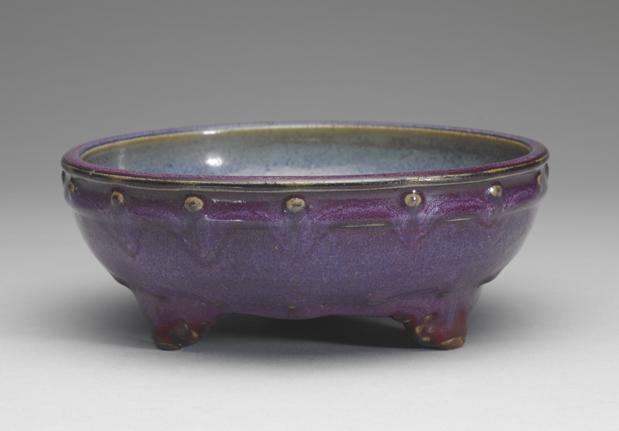Pot stand with rivet design Jun ware, azure and lilac glazeMing dynasty, first half of the 15th century
- Image Number: K1B017473N000000000PAB
- Dynasty: Ming dynasty
- Category: Ceramics
- Function: Floral apparatus
- Material: Minerals/Ceramics/
- Description:
The basin holder, round mouth slightly closed, shallow abdomen, flat bottom, three cloud head feet. The mouth edge and the abdomen bottom are decorated with string patterns for one week, and drum nails are pasted on them. The glaze inside is gray blue and milky, with earthworm walking mud patterns. The outer wall is dark purple glaze with blue spots in the glaze. The bottom of the utensil is painted with brown body protecting glaze, with 16 nail marks. The word “eight” is carved under the glaze, and the foot bottom is exposed with grey white bodies. Jun glaze and Longquan celadon tripod drum nail basin brackets were common in the Yuan Dynasty. The shape of this piece is similar to the Ming tripod drum nail basin brackets unearthed at the Fengdong Rock Kiln site of Longquan Kiln. It should be an early Ming work. There is no hole at the bottom of the basin holder, which can isolate the direct contact between the basin and the ground and protect the plant roots from pests. Another function of the tray is to store water and moisturize, so it can be used as a bonsai device alone to plant water plants. For example, the moss stone must be used to hold water in a shallow plate, and the Qing Huang Yingchen (active in the seventeenth century) painted the “Humble House Inscription” (Chinese painting

Pictures & Images [HD] download
© Copyright
The copyright of the article belongs to the author, please keep the original link for reprinting.
THE END





